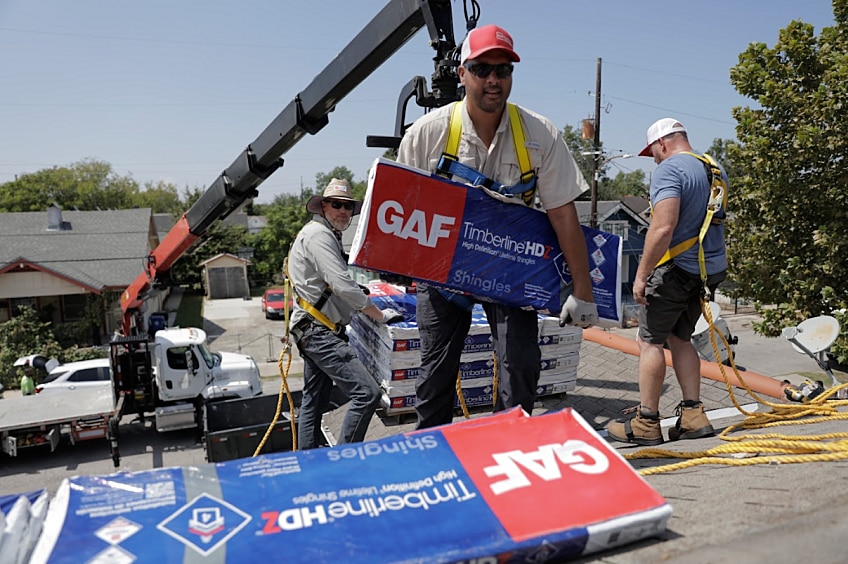Whether it's time for a new roof or a repair, you'll need a roofing contractor to help you make the right choices for your home. But if you haven't hired a roofer before, you may not know what to look for.
From referrals and licenses to manufacturer certifications, here's how to find a roofer you can trust with your home.
Ask for Recommendations or Referrals
One of the best ways to find a roofer is to ask people you trust for recommendations. If you have a friend, relative, or neighbor who has had their roof repaired or replaced in the last few years, ask them who they used.
Many communities and neighborhoods also have local Facebook groups or message boards. You can use these resources to get recommendations for experienced local contractors—and find out what roofing companies you should avoid.
Look for Manufacturer Certifications
Some roofers become certified by one or more roofing manufacturers.
If a contractor is part of a manufacturer's certification program, the contractor is more likely to be familiar with the manufacturer's products and may be eligible to offer enhanced warranties. Each program has it's own requirements so you should check the manufacturer's website to see what a particular certification entails.
For instance, GAF Master Elite® contractors must be insured and licensed in states where they operate (if required). GAF also considers factors such as years of roofing experience, credit rating and overall standing with the Better Business Bureau. GAF Master Elite® contractors are the only roofing contractors who can offer the GAF Golden Pledge® Limited Warranty* with up to 30 years of workmanship coverage on qualifying roofing systems.
In addition to certification programs, manufacturers may recognize certain contractors with awards. For example, GAF Master Elite® President's Club award-winning contractors demonstrate continued excellence in three key areas: performance, reliability, and service. Over the course of the prior year, award winners must have installed a minimum number of roofing systems that qualify for the highest warranties.
Review the Contractor's Online Reputation
Whether you first connect with a contractor through a recommendation or a quick Google search, do some online research to ensure you find a roofer you can trust.
Read company reviews, see what customers say on the contractor's social media pages, and visit the contractor's website for details on their products, services, and experience. You're looking for a company with a good track record and reputation. Once you've gathered all this information, you'll be able to make a more educated decision.
Check the Contractor's License and Insurance
You want to work with a licensed contractor (in states where licensing is required). If your state requires roofers to be licensed, run a license check on your state's Department of Consumer Affairs or business licensing website.
Also, make sure the contractor is insured with coverage for all their employees and subcontractors. This will help protect you if a worker injures themselves on your property or damages your home while working.
Visit the Better Business Bureau
The Better Business Bureau (BBB) has a database of information about businesses in different industries across the country. You can search by business name or business category (i.e., roofing), and then enter the name of your town or zip code to find companies that have BBB accreditation or a high rating. Some listings also feature customer reviews, which is another way to determine whether you want to work with a particular roofer.
Choosing the Right Roofing Contractor for Your Home
When you find a roofer you can trust to work on your home, price shouldn't be your only consideration. Experience, quality of service, and reputation also matter.
Take the time to research potential roofers. Ask for recommendations, look for contractors with manufacturer certifications, and check your state's contractor registration or licensing site and the BBB website. Following all these steps can help you pick the right roofing company for your job.
Once you've selected a contractor, it's time to get ready for your roofing project to begin. Check out this checklist for your next roofing project for next steps.
*Contractors enrolled in GAF certification programs are not employees or agents of GAF, and GAF does not control or otherwise supervise these independent businesses. Contractors may receive benefits, such as loyalty rewards points and discounts on marketing tools from GAF for participating in the program and offering GAF enhanced warranties, which require the use of a minimum amount of GAF products. Your dealings with a Contractor, and any services they provide to you, are subject to the Contractor Terms of Use. Visit www.gaf.com/gaf-contractor-terms-of-use for details
**Eligibility requirements, coverage, terms and restrictions apply and vary based on the enhanced warranty and products installed. For details and to view full
Golden Pledge Limited Warranty visit https://www.gaf.com/en-us/resources/warranties/residential. Visit gaf.com/LRS for qualifying GAF products.

